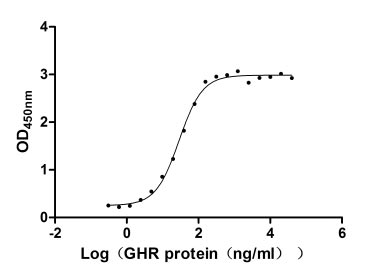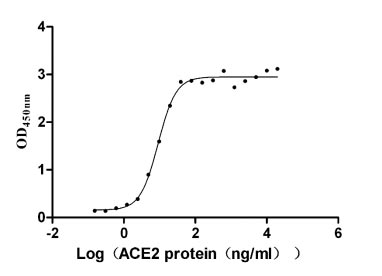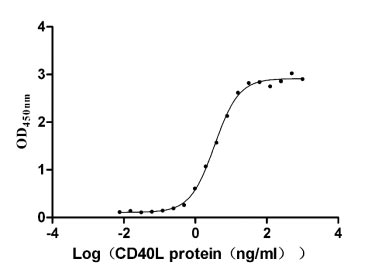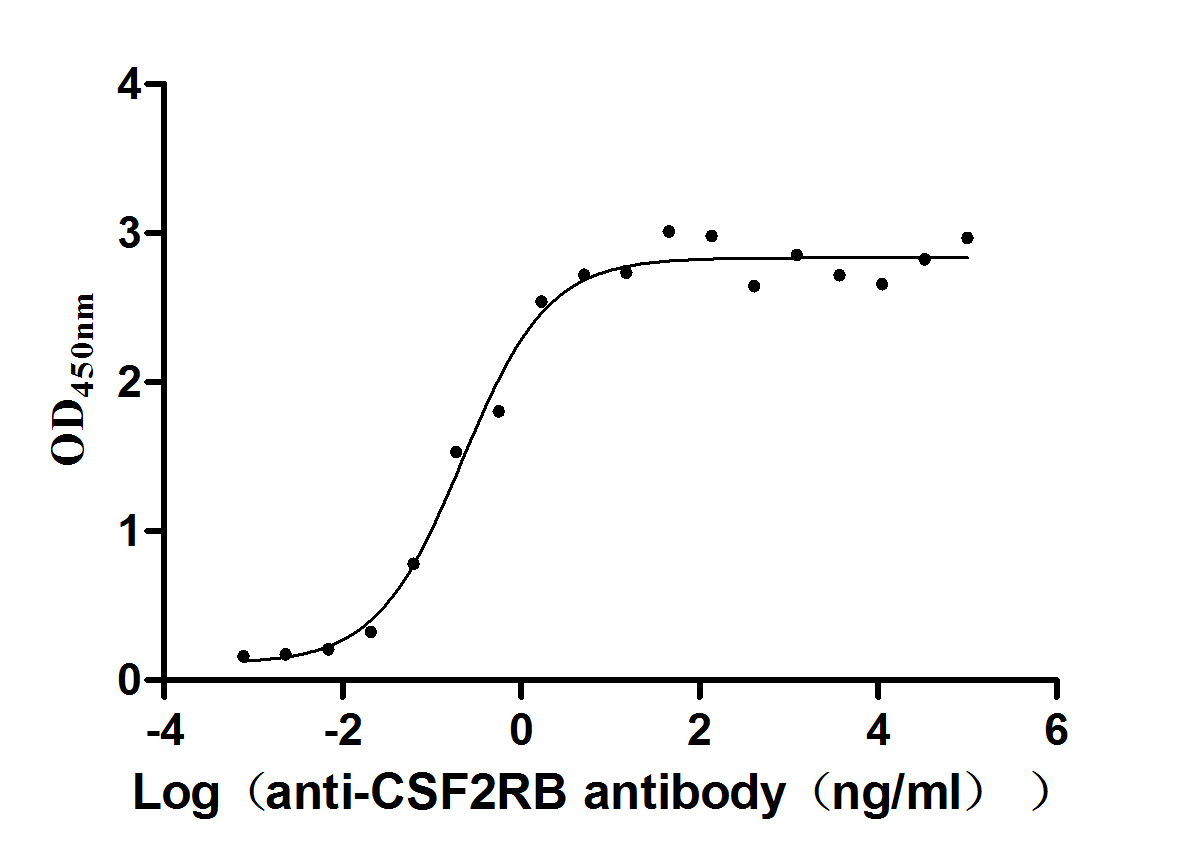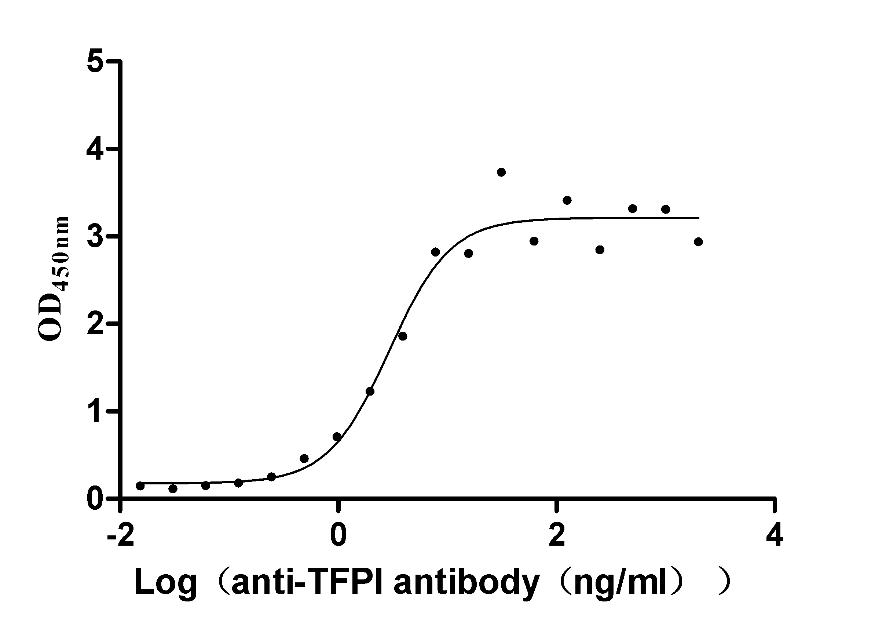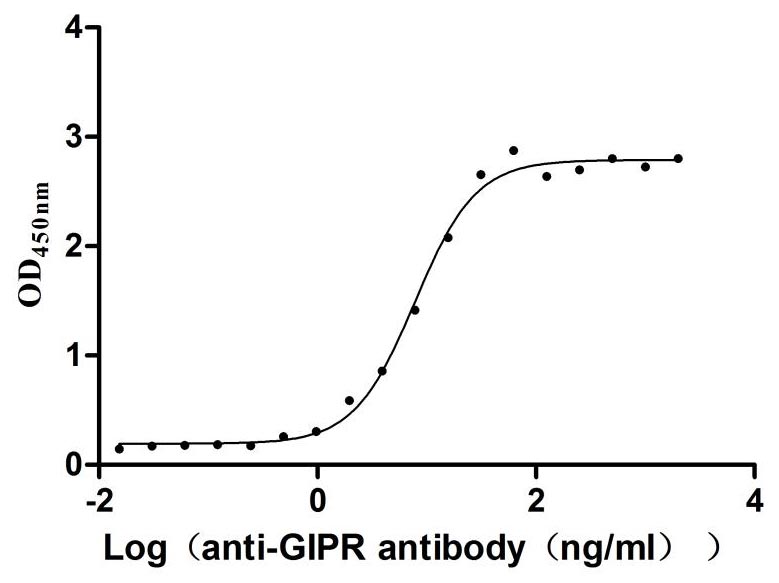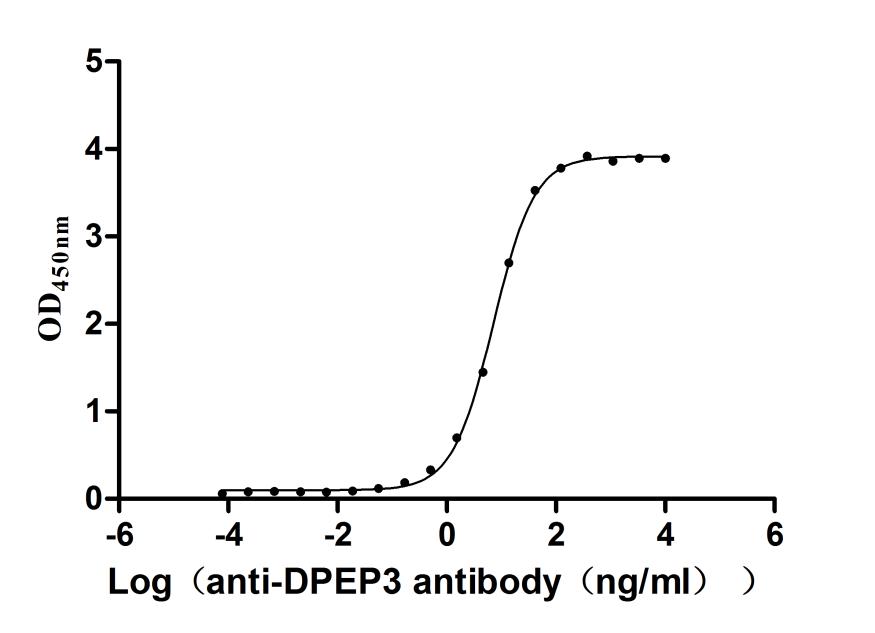Recombinant Rat Troponin I, cardiac muscle (Tnni3)
-
中文名称:大鼠Tnni3重组蛋白
-
货号:CSB-YP340566RA
-
规格:
-
来源:Yeast
-
其他:
-
中文名称:大鼠Tnni3重组蛋白
-
货号:CSB-EP340566RA
-
规格:
-
来源:E.coli
-
其他:
-
中文名称:大鼠Tnni3重组蛋白
-
货号:CSB-EP340566RA-B
-
规格:
-
来源:E.coli
-
共轭:Avi-tag Biotinylated
E. coli biotin ligase (BirA) is highly specific in covalently attaching biotin to the 15 amino acid AviTag peptide. This recombinant protein was biotinylated in vivo by AviTag-BirA technology, which method is BriA catalyzes amide linkage between the biotin and the specific lysine of the AviTag.
-
其他:
-
中文名称:大鼠Tnni3重组蛋白
-
货号:CSB-BP340566RA
-
规格:
-
来源:Baculovirus
-
其他:
-
中文名称:大鼠Tnni3重组蛋白
-
货号:CSB-MP340566RA
-
规格:
-
来源:Mammalian cell
-
其他:
产品详情
-
纯度:>85% (SDS-PAGE)
-
基因名:
-
Uniprot No.:
-
别名:Tnni3; Ctni; Tni; Troponin I; cardiac muscle; Cardiac troponin I
-
种属:Rattus norvegicus (Rat)
-
蛋白长度:Full Length of Mature Protein
-
表达区域:2-211
-
氨基酸序列ADESSDAAG EPQPAPAPVR RRSSANYRAY ATEPHAKKKS KISASRKLQL KTLMLQIAKQ EMEREAEERR GEKGRVLSTR CQPLVLDGLG FEELQDLCRQ LHARVDKVDE ERYDVEAKVT KNITEIADLT QKIYDLRGKF KRPTLRRVRI SADAMMQALL GTRAKESLDL RAHLKQVKKE DIEKENREVG DWRKNIDALS GMEGRKKKFE G
-
蛋白标签:Tag type will be determined during the manufacturing process.
The tag type will be determined during production process. If you have specified tag type, please tell us and we will develop the specified tag preferentially. -
产品提供形式:Lyophilized powder
Note: We will preferentially ship the format that we have in stock, however, if you have any special requirement for the format, please remark your requirement when placing the order, we will prepare according to your demand. -
复溶:We recommend that this vial be briefly centrifuged prior to opening to bring the contents to the bottom. Please reconstitute protein in deionized sterile water to a concentration of 0.1-1.0 mg/mL.We recommend to add 5-50% of glycerol (final concentration) and aliquot for long-term storage at -20℃/-80℃. Our default final concentration of glycerol is 50%. Customers could use it as reference.
-
储存条件:Store at -20°C/-80°C upon receipt, aliquoting is necessary for mutiple use. Avoid repeated freeze-thaw cycles.
-
保质期:The shelf life is related to many factors, storage state, buffer ingredients, storage temperature and the stability of the protein itself.
Generally, the shelf life of liquid form is 6 months at -20°C/-80°C. The shelf life of lyophilized form is 12 months at -20°C/-80°C. -
货期:Delivery time may differ from different purchasing way or location, please kindly consult your local distributors for specific delivery time.Note: All of our proteins are default shipped with normal blue ice packs, if you request to ship with dry ice, please communicate with us in advance and extra fees will be charged.
-
注意事项:Repeated freezing and thawing is not recommended. Store working aliquots at 4°C for up to one week.
-
Datasheet :Please contact us to get it.
相关产品
靶点详情
-
功能:Troponin I is the inhibitory subunit of troponin, the thin filament regulatory complex which confers calcium-sensitivity to striated muscle actomyosin ATPase activity.
-
基因功能参考文献:
- Pim-1 is a novel kinase that phosphorylates cTnI primarily at Ser23/24 and Ser150 in cardiomyocytes, which in turn may modulate myofilament function under a variety of physiological and pathophysiological conditions. PMID: 29544221
- Cardiac troponin I mutation P83S present in hypertrophic cardiomyopathy changes the contractile myofibril properties and modulation by PKA-mediated phosphorylation. PMID: 27150586
- Troponin I interaction with calcium and Troponin C in cardiac muscle PMID: 28864299
- Compared to cTnI(WT), both truncations displayed greater Ca(2+)-sensitivity and faster cross-bridge attachment rates at both SLs. Furthermore, cTnI(1-167) slowed MgADP release rate and enhanced cross-bridge binding. Our findings imply that cTnI-MD truncations affect the blocked-to closed-state transition(s) and destabilize the closed-state position of tropomyosin. PMID: 28958680
- PKC phosphorylates cardiac troponin I (cTnI) S23/24, S43/45 and T144 to fine tune myocyte function. PMID: 28587770
- These findings demonstrate that S-nitrosylation and S-glutathionylation exert opposing effects on Ca(2+) sensitivity in mammalian FT muscle fibers, mediated by competitive actions on Cys134 of TnIf. PMID: 27974300
- the interaction between cTnC and cTnI in skinned papillary muscle strips is dependent on sarcomere length PMID: 26944554
- cTnIS43/45N is a functionally conservative substitution, and may be appropriate for use as a phospho-null in rodent models designed for studies on PKC modulation of cardiac performance PMID: 26869200
- This study suggests that cTnI point of care tests can accurately determine heat stroke (HS) severity and could serve as simple, portable, cost-effective HS field tests. PMID: 26290107
- The present study utilizes viral gene transfer of cTnI with phosphomimetic S43D and/or S45D substitutions to evaluate their individual and combined influences on function in intact adult cardiac myocytes. PMID: 25481661
- Results suggest that weakened troponin C interaction with cTnI, via PKA phosphorylation of cTnI, may slow thin filament activation and result in increased myofilament relaxation kinetics PMID: 25185555
- The findings elucidate the pathogenesis of MI, and the gradual increase in serum adropin could be a novel diagnostic marker and serve as an alternative to troponin-I measurement for diagnosing MI. PMID: 24932661
- molecular determinants of cardiac myocyte performance as conferred by isoform-specific TnI residues PMID: 24853739
- Arsenic induced ventricular hypertrophy occurs via MEF2A/CAMKK2/CALM3/TNNI3 signaling. PMID: 25089838
- Data indicate that the serum TnI level was significantly greater in the acute coronary syndrome (ACS) group compared to the control group. PMID: 23904327
- A cutoff value of 4.8ng/mL for cTnI could be used as early as 8h after MI to accurately identify infarct in this model, whereas echocardiographic images taken 48h after MI predicted the infarcted area 14days after MI. PMID: 23764111
- Mutation in the C helix of cTnC can reduce Ca2+ binding affinity and cTnC-cTnI interaction. PMID: 23454346
- Hypertrophic cardiomyopathy related mutations R146G/Q and R163W impact interactions between cTnI and cardiac troponin C or actin. PMID: 23246786
- Aan increase in calpain activity may enhance cTnI degradation in the myocardium of tail-suspended rats. PMID: 20945043
- Normal developing myocardium and skeletal muscle transiently share both sk-fMHC and cTn-I proteins. PMID: 22808244
- the functional impact of cardiac troponin I (cTnI) phosphorylation by protein kinase A PMID: 22684024
- cTnC, cTnI, cTnT and cTm are not only present in myofilaments of ventricular cardiomyocytes in culture but are also within their nuclei; significantly, these four proteins appear between days 3 and 5 in both myofilaments and nuclei PMID: 22364878
- differential histidine ionization may be necessary for cTnI A164H to act as a molecular sensor capable of modulating sarcomere performance in response to changes in the cytosolic milieu PMID: 22500757
- Structural dynamics of C-domain of cardiac troponin I protein in reconstituted thin filament. PMID: 22207765
- PKC phosphorylation of cTnI may be maladaptive and potentially associated with cardiac dysfunction PMID: 22052912
- Cardiac function and phosphorylation of PLB and cTnI were compared in pacing, isoproterenol treatment, and combined pacing and isoproterenol treatment in isolated working heart. PMID: 21876643
- Ulinastatin may protect myocardium from the damage resulted from sepsis in a rat model, probably by lowering expressions of cTnI, TNF-alpha and ET-1. PMID: 20594472
- Data show that dual expression of two CM mutants, tropomyosin mutant A63V and cardiac troponin mutant R146G, were shown to additively slow myocyte relaxation beyond either mutant studied in isolation. PMID: 20161772
- Time-dependent cTnI breakdown occurs during global ischemia independent of reperfusion. cTnI breakdown during ischemia is further increased in presence of antioxidants. ROS generated during ischemia may play cTnI protective role. PMID: 15142843
- cardiac Troponin I Thr144 plays an important role in the acute acceleration of relaxation, whereas Ser23/Ser24 contributes to relaxation during more prolonged activation of protein kinase C by endothelin PMID: 16236710
- GATA elements control repression of cTNI promoter activity in skeletal muscle cells. PMID: 17875210
- Overexpression of heat shock protein 27 protects against ischaemia/reperfusion-induced cardiac dysfunction via stabilization of troponin I and T. PMID: 18397962
- cTnI-R145G expression influences the response to adrenergic stimulation dependent on the receptor subtype PMID: 18548271
- Metabolic inhibition of cardiomyocytes induces a parallel release of intact cTnI and its degradation products, starting only after onset of irreversible cardiomyocyte damage. PMID: 18721805
- the nNOS-PMCA4b complex regulates contractility via cAMP and phosphorylation of both PLB and cTnI. PMID: 19278978
显示更多
收起更多
-
蛋白家族:Troponin I family
-
数据库链接:
Most popular with customers
-
Recombinant Human Growth hormone receptor (GHR), partial (Active)
Express system: Mammalian cell
Species: Homo sapiens (Human)
-
Recombinant Severe acute respiratory syndrome coronavirus Spike glycoprotein (S), partial (Active)
Express system: Mammalian cell
Species: Human SARS coronavirus (SARS-CoV) (Severe acute respiratory syndrome coronavirus)
-
Recombinant Human Tumor necrosis factor receptor superfamily member 5 (CD40), partial (Active)
Express system: Mammalian cell
Species: Homo sapiens (Human)
-
Recombinant Human Neuropilin-1 (NRP1) (Active)
Express system: Mammalian cell
Species: Homo sapiens (Human)
-
Recombinant Human Cytokine receptor common subunit beta (CSF2RB), partial (Active)
Express system: Mammalian cell
Species: Homo sapiens (Human)
-
Recombinant Rabbit Tissue factor pathway inhibitor (TFPI) (Active)
Express system: Mammalian cell
Species: Oryctolagus cuniculus (Rabbit)
-
Recombinant Rat Gastric inhibitory polypeptide receptor (Gipr), partial (Active)
Express system: Mammalian cell
Species: Rattus norvegicus (Rat)
-
Recombinant Human Dipeptidase 3(DPEP3), partial (Active)
Express system: Mammalian cell
Species: Homo sapiens (Human)


